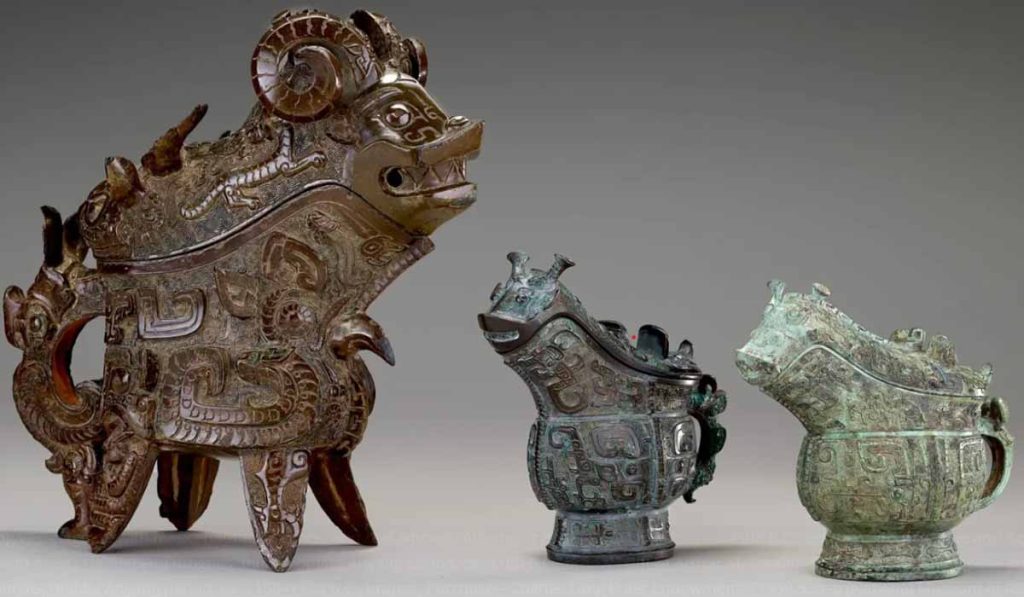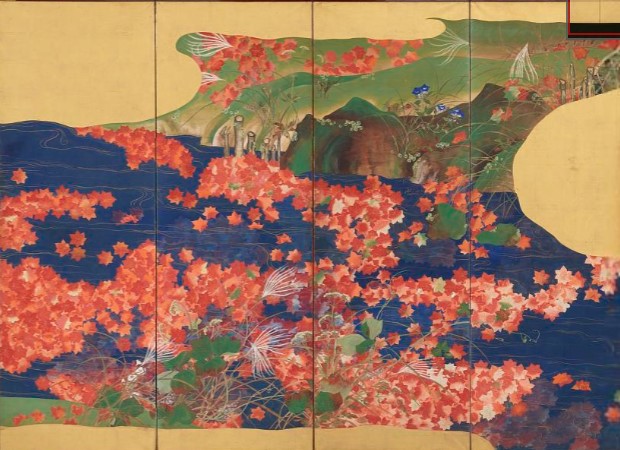
L-R: Ritual wine pouring vessel (gong) with masks (taotie), dragons, and real animals, Anyang or middle Yangzi region, ca. 1100 B.C., bronze, Gift of Eugene and Agnes E. Meyer, F1961.33a–b; Ritual wine-pouring vessel (gong) with masks (taoti) and dragons, middle or late Anyang period, ca. 1100 B.C., bronze, Gift of Arthur M. Sackler, S1987.279a–b; Ritual wine-pouring vessel (gong) with masks (taotie), dragons, and real animals, middle Anyang period, ca. 1150–1100 B.C., bronze, Purchase—Charles Lang Freer Endowment, F1939.53a–b (National Museum of Asian Art, Smithsonian Institution)
This week, the National Museum of Asian Art in Washington D.C. opened two important new exhibitions.
Anyang: China’s Ancient City of Kings
February 25, 2023–April 28, 2024
Anyang: China’s Ancient City of Kings is the first major exhibition in the United States dedicated to Anyang, the capital of China’s Shang dynasty (occupied ca. 1250 BCE–ca. 1050 BCE). The source of China’s earliest surviving written records and the birthplace of Chinese archaeology, Anyang holds a special connection with the National Museum of Asian Art. In 1929, one year after Academia Sinica began archaeological work at the Bronze Age site, Li Chi assumed leadership of the excavations. At the time, he was also a staff member of the Freer Gallery of Art (1925–30). To promote archaeological practice in China, the Freer supported Li Chi and his first two seasons of work at Anyang. This collaboration, predicated on the advancement of scientific knowledge and the protection of cultural patrimony, marks an important chapter in the history of Sino-American relations.

Ikeda Koson (1801–1866), Maple Leaves on a Stream (detail), Edo period, 1856–58, pair of six-panel folding screens, ink and color on gilded paper, Purchase—Harold P. Stern Memorial Fund and funds provided by the Friends of the Freer and Sackler Galleries in appreciation of James W. Lintott and his exemplary service to the Galleries as chair of the Board of Trustees (2011–2015), Freer Gallery of Art, F2014.7.1–2
Rinpa Screens
February 25, 2023–January 28, 2024
Explore a selection of screens painted in the Rinpa style, a movement known for stylized forms in bright colors that spanned the seventeenth to the nineteenth century. A complementary display of ceramics demonstrates the aesthetic exchange facilitated by trade between Japan and China and interrogates what makes a work of art Japanese.
